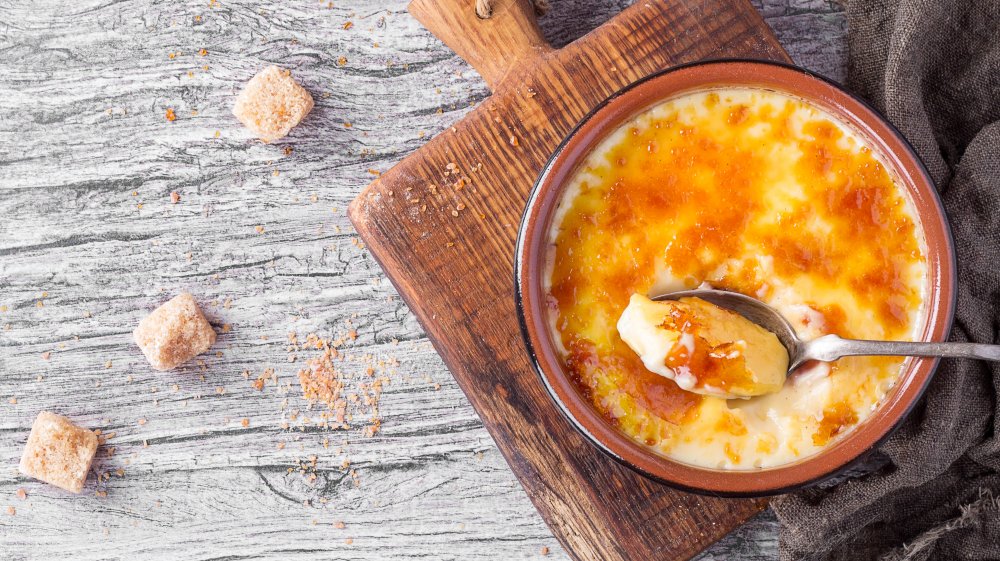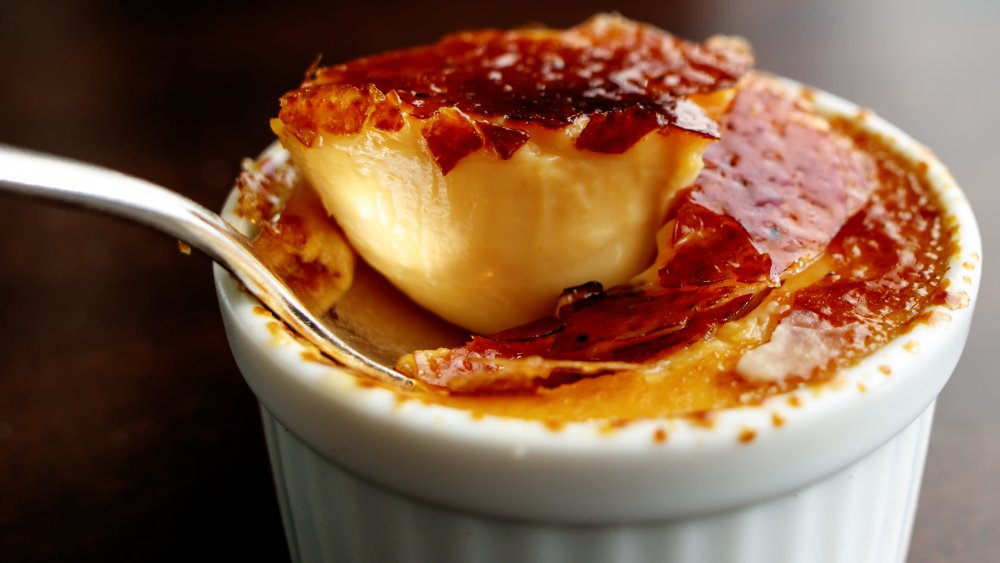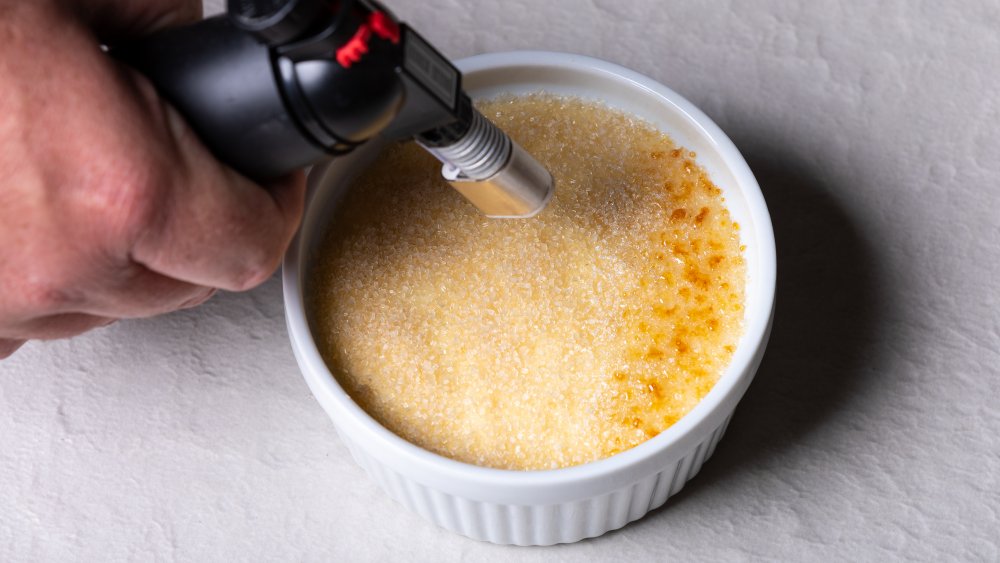Mistakes You're Making When Baking Creme Brulee
Crème brûlée is made with just a few ingredients: cream, vanilla, salt, eggs, and sugar. But don't let its seeming simplicity make you overconfident that this is an easy dessert to make.
Crème brûlée is a French sweet whose name literally means burnt cream. This smooth custard treat, paired with the crackly, crunchy, caramelized sugar on top, makes for a luxurious end to any meal that dinner guests will remember long after they leave to go home. But it's also an easy recipe to mess up.
Bon Appetit suggests that knowing the common mistakes before you even crack an egg can help to ensure you don't make them. What are these errors and pitfalls a novice cook makes when making crème brûlée?
To begin with, Chef Raphael Francois, executive chef and partner of Le DeSales told the Michelin Guide that one of the most important steps to making a true crème brûlée starts with having it at the right thickness, which is about 2 inches. This requires a crème brûlée dish that designed to give you an even bake. If you use an improper dish, you might wind up with an overcooked top and an undercooked bottom.
Creme brulee baking mistakes
Getting the eggs "eggs-actly" right can be challenging with any crème brûlée recipe. Common mistakes you will read on the internet are often regarding the use of whole eggs rather than just the yolks (via ChowHound). According to Bon Appetit, it is the yolk that gives the custard its rich, creamy texture, whereas using egg whites would make it firm. Ask Nigella describes custard cooked right as thick enough to coat the back of a spoon and that doesn't flow immediately back if you run your finger through it.
You also need to be sure to get your bain-marie (or the hot water bath the custard bakes in) right. The bain-marie is to ensure that the custard cooks evenly and doesn't split. The Kitchn recommends lining the dish with a clean towel to keep the baking dishes from slipping once you pour in the water.
Additionally, pay attention to the sugar. Bon Appetit notes that this is not where you want to be creative. Skip any sugar du jour and stick with white granulated sugar. It burns well and doesn't melt the delicate custard. A New York Times reader also advised not to make the rookie mistake of waiting to serve the dessert because if you allow it to sit too long, the sugar will melt.
To torch or not to torch?
And finally, the last common mistake people make when baking crème brûlée seems to be up for debate. There are those who believe it is OK to use the broiler for brûléeing, while others say the only acceptable method is a blow torch.
Bon Appetit suggests that broiling simply doesn't give crème brûlée the same brown color and crisp effect that a blowtorch does; however, the Kitchn notes that using the broiler is a very practical way to accomplish brûléeing, but cautions the custard must be very cold and fully set in order for the broiler to work. If you can, let your custard set overnight to get the best results.


